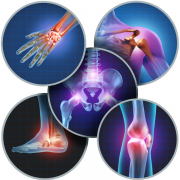5 Tips for Treating Osteoarthritis in the Elderly
Osteoarthritis is a very common disorder that affects over 50 million adults, both men, and women. The disorder usually presents with pain and joint stiffness that fluctuate regularly but never completely disappear. The condition has no cure, and osteoarthritis treatment focuses on managing the symptoms. Surgery is often the last resort treatment to replace the joint.
However, several non-medical treatments can help improve joint function, ease the symptoms and delay the progression of the disorder. In general, osteoarthritis is best managed in stages, starting with conservative non-medical treatments first and then progressing to medications and eventually to surgery, if no medical treatment works. Our tips for treating osteoarthritis in the elderly:
-
Manage Expectations:
Because the internet is riddled with countless unproven cures and remedies, people with osteoarthritis often develop unrealistic expectations; and worse, they often discontinue follow-up with conventional healthcare workers.
First, remember that osteoarthritis is not just due to advancing age and not everyone will need joint replacement surgery. While wear and tear of the joint are risk factors, many other factors play a role in causing osteoarthritis. Several non-surgical therapies can significantly improve joint function.
It is important to follow up with a healthcare provider who can monitor their overall health and joint function. Failing to follow up leads to the progression of the disease and disability.
-
Make Key Lifestyle Changes:
One of the best tips for treating osteoarthritis in the elderly is to make some important changes in your overall life. Try:
- Making a healthy diet a priority. Include lots of fruits, vegetables, whole grains, fish, nuts, and other healthy fats, while limiting your intake of red meat. There is ample evidence that a healthy nutritious diet has anti-inflammatory properties that can ease the symptoms of arthritis.
- Become physically active: Get moving, and stay moving. This means walking regularly, going for a swim or even using a bicycle. The key is to remain active every day. Walk, swim, cycle indoors, do light strength training… ask our team how you can get started safely.
- Use alcohol only in moderation, and if you smoke, now is the time to quit.
- Watch your weight. Evidence shows that losing even 5%-10% of the bodyweight from a combination of a healthy diet and exercise can significantly improve joint function, increase muscle strength and decrease pain.
-
Use Simple At-Home Remedies:
You can relieve pain and discomfort in a variety of ways, including:
- Applying heat or cold or soaking in a warm bath to relieve the joint pain and swelling.
- Physical therapy to help improve joint function and range of motion.
- Yoga and dance to increase range of motion and joint flexibility.
- Weight training can help build muscle mass to help support and protect the joints
- Aerobics (bicycle riding) can improve heart function, prevent weight gain, decrease joint swelling and improve the overall health of the body.
- Specific exercises like swimming, strength training, tai chi, and yoga are of enormous benefit to patients with arthritis as they have been shown to reduce pain and improve stability while walking.
- The use of knee braces can decrease chronic pain and improve stability. Also, the patient may benefit from the use of an ambulatory device like a cane or a walker. These devices help maintain independence.
-
Ask Your Healthcare Provider About Medication for Osteoarthritis Treatment:
Topical creams like diclofenac gel and capsaicin can help with mild joint pain. These agents should be started early in the disease and can be used several times a day. Other options include:
- Oral medications like non-steroidal anti-inflammatory drugs (NSAIDs) are very effective for the relief of mild to moderate pain. However, they need to be used wisely as they have adverse effects on the intestine, liver, and heart.
- The antidepressant duloxetine is very effective for osteoarthritic and low back pain. It is classified as an SNRI and is approved by the FDA. Duloxetine is an option for patients who are not able to tolerate NSAIDs. The other benefit of duloxetine is that it also improves mood.
- Intra-articular injections: Some patients may benefit from the injection of corticosteroids into the joint. The steroid injections are most effective during acute flare-ups and are ideal for patients who cannot take oral corticosteroids.
-
Ask About Joint Replacement:
When all the non-drug and drug therapies are no longer effective, and you still suffer from severe joint pain and disability, the last option is joint replacement. The surgery does help improve lifestyle, relieves symptoms, and allows the patient to once again ambulate. However, joint replacement surgery does require anesthesia, followed by rehabilitation that may vary from 4-8 weeks.
Contact Cano Health Today
Patients diagnosed with osteoarthritis should follow up with their primary care provider or rheumatologist. The disorder has no cure but its progression can be slowed by making lifestyle changes. Even though there are many types of medical therapies available, it is best to consult with your healthcare provider to determine which is best for you. Contact Cano Health for an appointment today; now is the time to take charge of your health!



